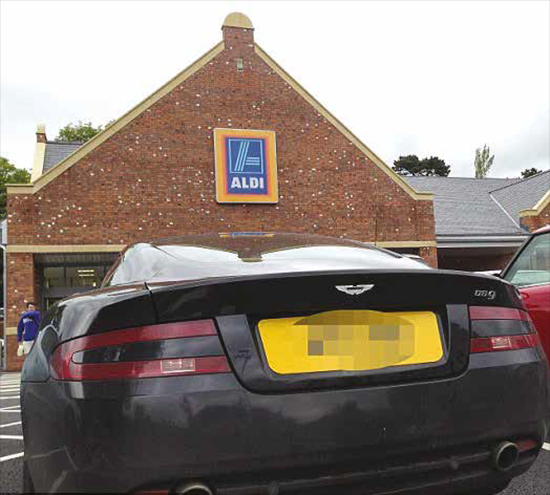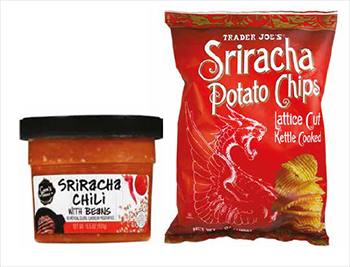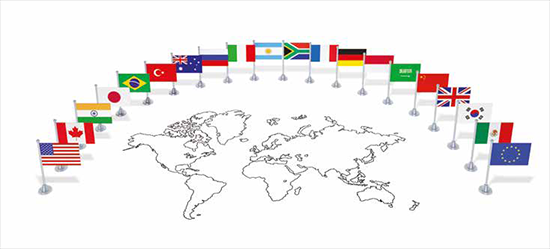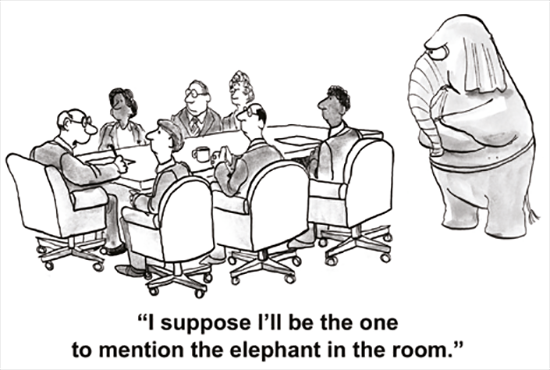We are living in chaotic times at retail. There are more product choices than ever, shoppers want things now or at least within 24 hours, our palates are becoming much more global, automation is ubiquitous in the front and back ends of the store, and technology is a huge enabler for speed, analytics and new consumer behaviors. It is head-spinning how fast all of this is happening.
But out of this cloud of chaos and “age of disruption”, there will be retail winners and losers, supplier champions and laggards; and we have to ask ourselves, how will private brands fare amidst all of this disruption? How should private brands and your company respond most effectively to each of these disruptive forces and what are the implications?
So, to stoke the fire of the Disruption conversation and really get it burning, here is a unique perspective on the Top Ten Disruptors At Retail. You can, of course, argue if one of the disruptors you are focused on did not make the list, but the real argument should be “what are you doing about it, do you have enough resources deployed, and are we acting fast enough to take advantage?”
Big Data, Analytics & Moneyball
For many “big data” observers, the onslaught of analytics driving two of the biggest industries in the world, sports and retail, started in the mid-nineties by Billy Beane and Jeff Bezos. Now Bezos you obviously have heard of, but if you haven’t heard of Billy Beane, the General Manager of the Oakland Athletics baseball team, then maybe you know him from the Best Picture nominated “Moneyball” movie. Beane said, “technology will transform the social fabric of the sport”, and he is credited with starting the analytics arms race in Major League baseball. Analytics today are driving player personnel/ roster decisions, salary negotiations, how defensive players are positioned, pitching changes and pitch count – they are even driving the stadiums themselves and how concessions are heat-mapped to staff accordingly and have food ready at the right times. And baseball is not unique, as the importance of analytics is similar to so many other global sports today.
What Beane is to baseball, Bezos is to retail. Here is a guy that has over 500 patents pending, and one of the more well-known is for “Anticipatory Shipping”. Yes, Amazon is using predictive analytics to ship products to warehouses before consumers even order them.
Though in the case of retail and Amazon, other retailers are not far behind, and some would like to even claim they are nudging ahead. Kroger’s CIO has said that “data collection is our present and future”, and the company is backing it up with their 84.51° division. If sports can heat-map stadiums, then 84.51° can and does heat-map (through infrared and video technology) the store experience, from what time of day you enter a store, to who with and how you conduct your shopping. Target in Minneapolis has identified pregnant mothers through big data before they even become mothers, so they can reach these important consumers before other CPGs bombard them in the hospital and shortly thereafter.
While the largest retailers are investing heavily in big data that drives both shopper understanding as well as efficient supply chain behaviors, it is the Private Brand department that needs to ensure they are getting their fair share of analytical investment and resources. Big data and how we use it is one of the biggest disruptors today.

Generation Z
Gen Z’ers are disrupting the marketing landscape like no other group, even Millennials. This generation (ages 6-23) is now gaining the purchasing power, entering the job market, and if you want to be effective in reaching them, there are four key things you can do as a supplier or retailer, and all of it is disruptive.
Think fashionably. A product’s aesthetic is the #1 thing Gen Z consumers look for before they buy. Fashionable design matters to them more than any other generation.
Pop-Ups are a real deal, not for just the retail and CPG elite. These retail and CPG pop-up stores allow consumers to be more experiential, and interact in fun and unique ways. Not only are retailers like H&M using them globally, but so are manufacturers like Coke & P&G. Why not a creatively executed private brand pop-up?
Know geo-fencing. Gen Z’ers are the first generation to use their smartphone more than TV. So geo-fencing stores and sending location based alerts via mobile phones is highly effective.

Bragging About Your Penatration
Bragging never used to be in vogue, but now it is, at least when it comes to retailers’ penetration numbers. While many European retailers teeter between 40-50%+ private brand penetration, there are some leading U.S. retailers that are closing in or have already exceeded 30%. Wegmans and HEB are always those best-in-class regional operators mentioned as excelling in private brand, but look at Costco, Kroger and Albertson’s/Safeway who are getting much more blatant at expressing their progress, and Kroger especially.
They are sharing progress towards the metric not just because of Wall Street and investors. Retailers like Kroger are also doing it for the supplier community – it sends a clear message to Private Brand suppliers that they should come to Kroger first, not second with innovation. When they say that “41 of their top 50 items are Private Brand products” or “from 2011 to 2017 they have experienced 37% Private Brand growth, from $15B to $20.5B” it definitely gets your attention. They are serious. This number grew to $21.5B in 2018! This public buzz about penetration and private brand growth intentionally disrupts how we think about them and other retailers who rightfully tout it.

The Need for Speed
Being fast is your friend. It is the consumer’s friend too, and it may be one of the biggest disruptors of our times. There are three shopper “demands” you should keep front-of-mind generally- speaking, and private brands would apply to all of them.

Immediate delivery – The customer’s expectation around delivery is 24 hours or less, and increasingly moving to “same day” or within the hour. Amazon started this freight train, with Prime (101 Million members, and 62% of all U.S. households) and Prime Now. Walmart/Uber and Target/ Shipt understand this consumer imperative. GrubHub, UberEats, Door Dash all reinforce shoppers’ notions of immediacy when it comes to food delivery. You need to also if you have ecommerce. If you have ecommerce, then you need to live up to the notion of immediacy too.
Immediate response – The “need for speed” also affects how we situate customer service and the ease of product returns. Free shipping for all shopper returns will be the norm in the future, and get your customer service moving to live chat.
No waiting in lines – Lines are and will become a thing of the past. At the very least there will be significant tools to reduce wait times. It is not just Amazon Go that is going cashierless, but 7-11 (X-Store in Taiwan) and Sam’s Club are all testing their own versions of high-tech, cashierless experiences.

Aldi & Lidl the Tip of the Iceberg
The game-changer for the Limited Assortment/Hard Discount sector is who and how they are attracting a different set of consumers, including Millennials. They always had the consumer who treated “value as a necessity” (45 million people in the U.S. are below the poverty line, less than $25K for a family of four), but they now are bringing in more consumers who think of “value as a priority”. This desire for value transcends demographics, as smart consumers exist at all levels, and Aldi and Lidl know this. Their marketing, advertising and even product development is all very artful in broadening their appeal.
Their cultural persistence to keep learning and their huge investment around the world, should get your attention. Even though their market share is less than 3% in the U.S., don’t let this lull you into a comfortable state of mind. Just look what they have done in the U.K. and Australia over the last couple of years.
Global & the Effect on Cuisine

Ethnic cuisine is becoming more the norm than the aberration where consumers’ taste for bolder, more adventurous cuisine is on the rise. More travel, more cooking shows and Food Networks, internet culinary blogging and greater access are all factors. This should be called a “welcome disruptor”, but it poses challenges of trend-watching, quicker new product development and global importing.
Truly ethnic variety seemed outof- reach and is now much more commonplace. In the U.S. it is Asian cuisine that is the fastest growing, correlated with the Asian population that is also growing the quickest (a 72% increase since 2000). Korean food is on fire around the world, literally, but it is that little gem from Vietnam, Sriracha, which is the flavor that keeps on giving. Retailers like Trader Joe’s and Walmart have already taken notice, where you will find Sriracha incorporated into chips, soups, hummus, salads, and even donuts and beer.
Incubators and the Shift to Small
Let’s face it, the share of food and beverage sales of the Top 25 CPG companies has declined steadily, from 66% in 2012 to 63% in 2016 (AT Kearney study). This sobering fact has them trying new things in terms of innovation, so one of the big disruptors on the horizon are CPG Incubators and Accelerators.
Most of the big CPGs now have an incubator or accelerator that they own, oversee or nurture. General Mills (301INC), Pepsico (The Hive), Nestle (Terra), KraftHeinz (Springboard) and more recently Mars (Seeds of Change). Retailers like Target & Metro also have their own versions of accelerators. All of this is to launch more entrepreneurial ventures and smaller brands faster, something these big-brand institutions had outlearned and are not built to do today. These more fleet afoot incubators, in a way, are admissions by big brand- CPGs of their own lethargy.
This trend has the potential to be really detrimental to own brands, so more retailers have to get in the game and direct their incubation efforts towards private brand opportunities. This is different than having Innovation or Culinary centers, as true incubation involves bringing in entrepreneurs from outside your organization and giving them degrees of freedom and investment to thrive.
The Role of Humans

Some would call this disruptor the “Rise Of The Machines”, but Arnold Schwarzenegger and The Terminator had already coined this phrase! The movie (along with the cartoon The Jetsons) had a lot of things correct, namely that automation will become ever present, consuming what once were human tasks. This is already having a hugely disrupting effect on retail and the store experience itself.
Friendly customer service – There are divergent views on the role of people, their impact on friendly service and the interface throughout departments. Retailers like HEB, Hy-Vee and Waitrose would swear by well-trained employees, but for Amazon Go and Walmart (say goodbye to the greeter), not so much.
The changing check-out – Ahold and Sainsbury have moved heavily to self checkouts for efficiency and cost reasons. This will be a sign of things to come, as one employee can handle as many as 8 self-service checkouts.
Supply-side and delivery – Bots, drones and driverless vehicles are all taking humans out of the equation. Amazon has over 45,000 warehouse robots and even warehouses pushing 1 million square feet have only 1500 employees.
Automation as a disruptor is here to stay, but with a lack of human touch points in and out of the store, you have to think about telling and selling the virtues of private brands through new media and in unique ways.

Economics & Politics
Out of all the disruptors on the list, I think the “Economic & Political” disruption is the toughest to guard against or leverage to your advantage. Three things really stand out in this arena:
China, Trade & Tariffs – Trade is a worldwide point of stress right now – Brexit, USMCA and China-US tariff escalation are all threatening the stability of the supply chain, which clearly affects non-food costs passed on to consumers but also the strength of the agricultural markets.
$15 Minimum Wage – If there were a change in political parties, the $15 minimum wage could be the law of the land (in the U.S.). The Minimum Wage conversation is highly country and culturally- specific (as countries like France already have living wage mandates), but $15 an hour in the U.S. could have detrimental effect on restaurants, food delivery services, food manufacturing plants and many more.
Fewer Farms & Shrinking Agriculture – There is shrinking global farmland and fewer farmers in total, and the number of actual farms has reduced over time. Farms are getting bigger (acreage), but the regional and smaller farmer is getting squeezed out. Bottom line is this means less “local” farm marketing, as well as fewer supply chain options.
One of the obvious courses of action in response to these economic and political disruptors is to fully diversify your supply chain, eliminate country-specific reliance as much as possible. Begrudgingly we would also say that further automation can also be a buffer as it applies to minimum wage mandates.

Amazon – The Elephant in the Room
Amazon really is the elephant in the room with any retail conversation, especially a discussion about “disruption”. The reality is they are included in all types of industry discussions like new media (Washington Post), film/tv production and so much more.
The scale of their digital retail sales represents ½ the entire market. Their $258 Billion outweighs the next 49 of ecommerce providers. They account for 32% of all food and beverage sales through ecommerce in the U.S., and Walmart represents ½ of Amazon’s share. OK, you get the point, the numbers are staggering.
The vulnerable areas of Amazon are twofold, and things you should be trying to leverage. First, their integration of AmazonPrime and Whole Foods is still a glass half full or half empty (75% of Whole Foods shoppers are Prime members, but only 20% of Prime members are regular Whole Foods shoppers). So, get your sustainability and organic/natural efforts into high gear, something Kroger has done with Simple Truth as a $2B+ brand. And second, the music to your ears should be to continue moving ahead on your branding, marketing and innovation of your private brand programs, because Amazon still has a relatively clumsy and disconnected approach. Their brands still have low levels of equity, so you should try to build your brands while you can to establish loyalty and trust.
The Actions
Debate these Top Ten Disruptors, prioritize which apply to you most, and ensure you have strategically thought about the implications and resources for the future. Many of these disruptors demand a preemptive investment to be successful, but first there needs to be an acknowledgement that they indeed matter. Hopefully this has provoked you to think about their impact and what you can do, and that you cannot remain comfortable. As JFK said, “change is the law of life”, and even though it can be daunting, it is those retailers who think ahead, invest in the future, and embrace big data that will rise above the rest.